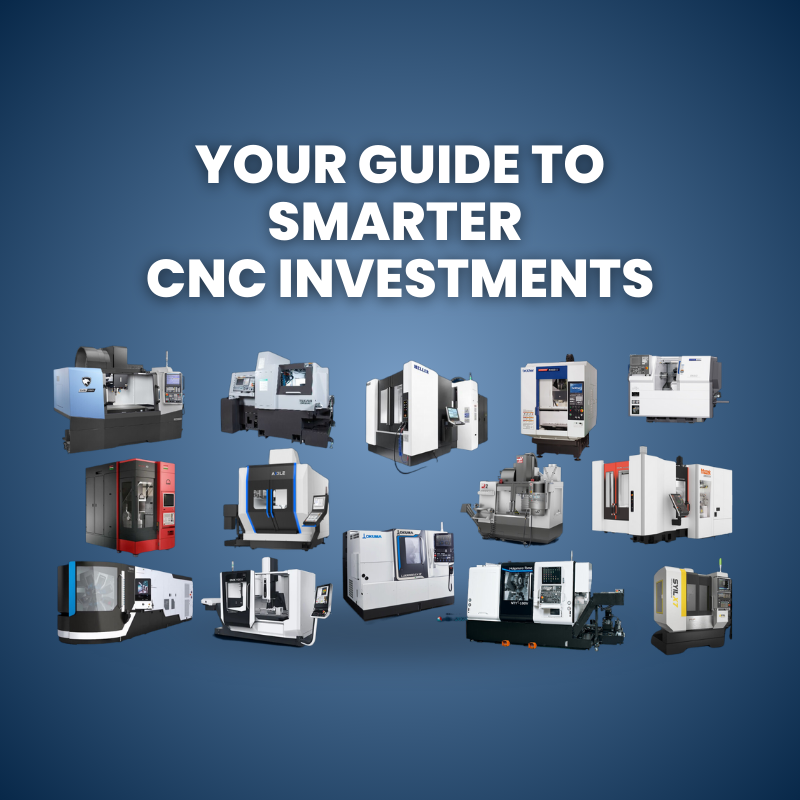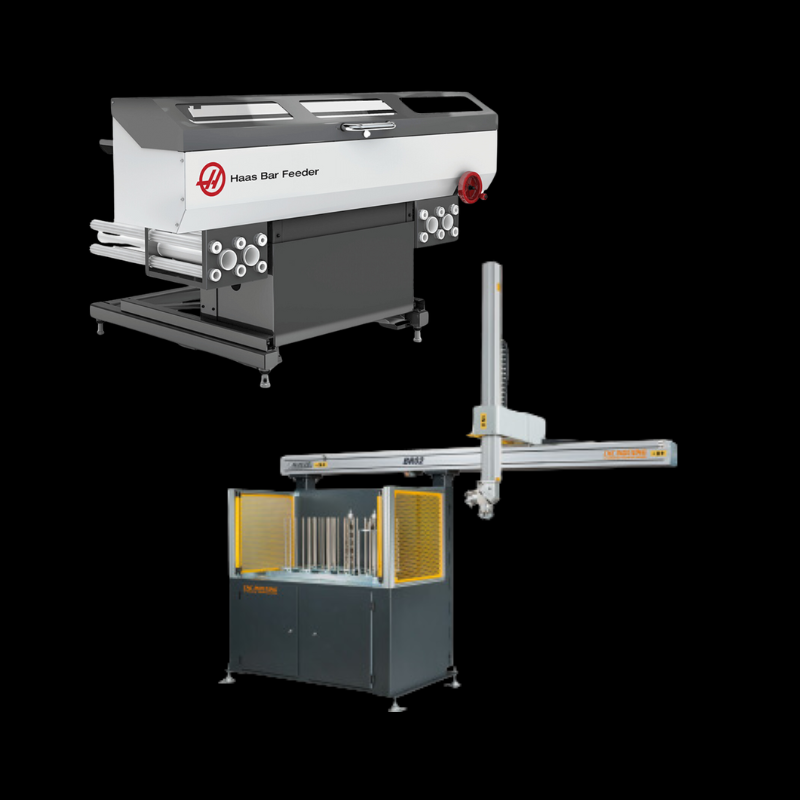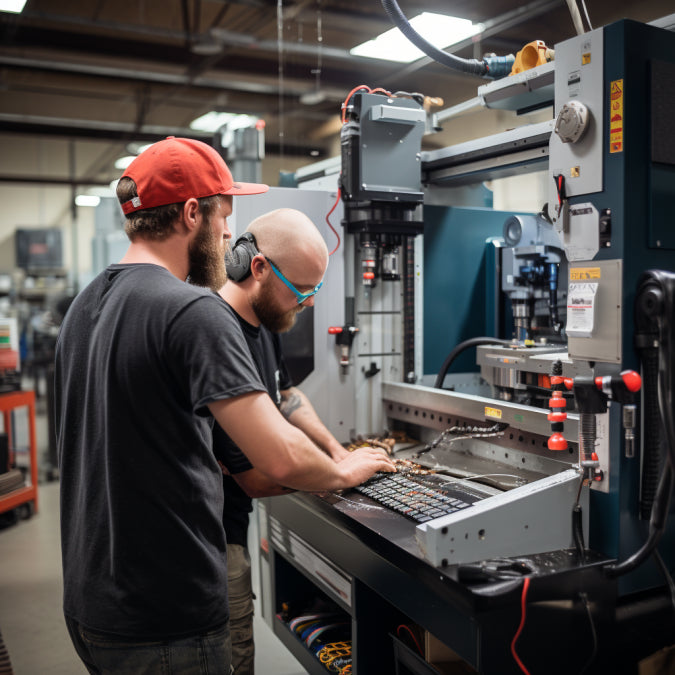Ever wonder why some CNC machines outperform others in precision and efficiency? The secret often lies in the spindle.
The right spindle for your CNC machine depends on the specific machining tasks, material types, and the precision required. High-speed spindles are suited for detailed, fine work, while high-torque spindles excel in heavy-duty cutting and milling.
CNC machine spindles are the heart of any milling or cutting machine, dictating the quality of work possible. These components determine the cutting speed, finish quality, and overall machining efficiency. Spindles come in various types, including high-speed, high-torque, and those designed for specific materials like wood, metal, or composite.
The choice between a belt-driven spindle and a direct-drive spindle is another consideration. Belt-driven spindles generally offer a cost-effective solution with good speed variability but may not match the precision of direct-drive spindles, which provide more direct power to the cutting tool.
Lastly, the integration of spindle cooling systems plays a significant role in maintaining spindle longevity and performance. Overheating can lead to spindle failure and decreased accuracy over time, making cooling systems an essential factor in spindle selection.
Belt Drive vs. Gear Drive vs. Inline Drive Spindles
Selecting the right spindle drive system is crucial for maximizing CNC machine performance. Whether you opt for belt, gear, or inline drives affects everything from precision to power and maintenance needs.
Belt drive spindles offer flexibility and cost-efficiency, ideal for a wide range of applications. Gear drives deliver high torque, suitable for heavy-duty machining. Inline drives provide the highest precision and speed, perfect for high-speed and fine-detail work.
Understanding the distinctions between spindle drive systems can significantly influence your CNC machine's capabilities.
Belt Drive Spindles: Versatility and Value
Belt drive spindles are known for their versatility and cost-effectiveness. They are suitable for a variety of machining tasks, offering a good balance between speed and power. However, they might not match the precision of direct-drive systems and can require more maintenance to ensure belt integrity.
Gear Drive Spindles: Power and Durability
Gear drive spindles excel in heavy-duty machining tasks, providing high torque and power. They are durable and reliable for cutting tough materials but can be louder and produce more vibration than other types, potentially affecting precision.
Inline Drive Spindles: Peak Precision and Speed
Inline drive spindles offer the highest level of precision and speed, directly coupling the motor to the spindle for minimal loss of power. Ideal for tasks requiring fine detail and high-speed machining, they represent a higher upfront investment but deliver superior performance and efficiency.
Key features of a CNC Spindel
Industrial CNC spindles have critical advanced components like precision bearings, AC motors, hydraulic systems, and sensors.
Precision bearings ensure smooth operation and longevity, and they are engineered to support the rotational movements of the spindle in CNC machines, crucial for precision machining. They must withstand high speeds and loads, requiring careful selection and maintenance to ensure longevity and accuracy.
AC spindles are known for their robust performance in high-power applications, offering variable speed control for diverse machining tasks. AC spindles are favored in industrial settings for their power and adaptability to a wide range of speeds and tasks. With superior torque and efficiency, they handle heavy-duty machining with ease, making them suitable for cutting hard materials and prolonged use.
Hydraulic systems enhance spindle control and performance, and integrated sensors offer real-time feedback for unparalleled accuracy. These features combine to deliver the efficiency, durability, and precision required in demanding industrial applications, making them essential for high-quality CNC machining outcomes.
Consider choosing the correct spindle with quality components that can enhance your CNC machine's efficiency, reduce downtime, and maintain high-quality outputs.
How Spindle Choice Influences Future Tool Selection
Selecting the right spindle for your CNC machine is a decision that extends beyond immediate needs, significantly affecting your future tool choices and machining capabilities.
Your spindle choice dictates the tools you can use, impacting power, speed, and torque requirements. Opting for a versatile spindle expands your tool selection, accommodating a wide range of materials and tasks.
The spindle's specifications, such as its RPM range and torque, directly influence the types of tools that can be effectively utilized. High-speed spindles cater to precision tools for detailed work, while high-torque spindles are suited for heavy-duty tools needed for hard materials.
How Spindle Selection Affects Quality, Runout, and Tool Breakage
Choosing the right spindle for your CNC machine is crucial, affecting not just the machining speed and efficiency but also the quality of your work, tool life, and the risk of runout and breakage.
The spindle selection directly impacts machining quality, influencing runout and the likelihood of tool breakage. A spindle with low runout ensures higher precision and surface finish, while its compatibility with the tooling affects durability and performance.
Spindle runout refers to the spindle's deviation from the true rotational axis, which can cause uneven tool wear, poor surface finish, and increased risk of tool breakage. Selecting a high-quality spindle minimizes runout, enhancing the overall quality of the machined parts.
Choosing CNC Spindles According to Project Needs Precision
The precision requirements of your CNC projects dictate the spindle choice. High-speed spindles offer precise control for detailed work on softer materials, while rigid, high-torque spindles are better for maintaining accuracy in heavy-duty machining.
Precision in CNC machining isn't just about achieving the right dimensions; it's about ensuring the consistency and quality of every cut. The spindle plays a crucial role in this, as it directly affects the machine's ability to perform precise movements and maintain stability during operation. High-precision spindles often feature enhanced design elements such as advanced bearing systems and thermal stability controls to minimize vibration and maintain accuracy under varying operating conditions.
For projects requiring the utmost precision, such as aerospace components or intricate jewelry, the spindle's ability to operate at high speeds without sacrificing accuracy is essential. This includes considering factors like runout, which should be minimal to ensure the cutting tool remains perfectly aligned with the workpiece.
Selecting CNC Spindles: A Material-Based Approach
Selecting the ideal spindle involves understanding the material properties you'll be machining. High-speed spindles are best for softer materials requiring fine, detailed work, whereas tougher materials demand high-torque spindles for effective machining without tool wear.
Different materials impose unique demands on the machining process, influencing the choice of spindle based on speed, torque, and power requirements. For instance, machining soft materials like plastics or wood often calls for high-speed spindles that can perform precise cuts at rapid rates without causing damage. Conversely, machining hard metals like steel or titanium requires spindles with high torque to cut through the material effectively, highlighting the importance of selecting a spindle that aligns with the physical characteristics and machining requirements of the material in question.
Balancing Speed and Torque in CNC Spindle Selection
Finding the right balance between speed and torque in a CNC spindle is essential for achieving the desired machining outcomes. High-speed spindles, operating at high RPMs, are ideal for applications requiring fine detail and smooth finishes, such as engraving or working with soft materials. On the other hand, spindles with higher torque, though they may operate at lower speeds, provide the necessary force for cutting through tougher materials like steel or titanium without straining the machine or damaging the tooling.
This balance is not just about choosing one over the other; it's about understanding the specific requirements of your projects. For instance, tasks that involve a mixture of detailed work and heavy cutting may require a more versatile spindle solution that offers a good compromise between speed and torque.
Maximizing CNC Spindle Life Expectancy
The lifespan of a CNC spindle is very important for the overall performance and cost-effectiveness of CNC operations. For any CNC machine owner or operator, maximizing spindle life expectancy is essential. Spindle longevity is influenced by several key factors: operational frequency, load conditions, and maintenance practices. High-quality spindles are engineered for durability, but their operational life can vary significantly based on how they're used and maintained.
Spindle Maintenance and Cooling Systems
Maintenance and Operational Practices: Proper use and regular maintenance are foundational to extending the life of a CNC spindle. Implementing a routine maintenance schedule and operating spindles within their recommended specifications are critical steps. Regular maintenance should focus on cooling and lubrication systems, load monitoring to prevent bearing overload, sealing systems to protect against contamination, and routine electrical inspections to ensure the integrity of motor and sensor systems. Adherence to these practices and operational guidelines helps prevent common spindle issues, such as overheating, bearing failure, and contamination, thereby extending spindle life.
Cooling System Importance: Effective cooling is vital for maintaining spindle performance and longevity. Cooling systems, including liquid cooling and forced air systems, play a crucial role in dissipating heat generated during high-speed operations, preventing overheating, reducing thermal expansion, and ensuring consistent machining accuracy. These systems help maintain thermal stability and keep the spindle operating within safe temperature ranges, which is paramount to prevent spindle degradation over time and costly repairs or replacements. Selecting the appropriate cooling technology based on the specific demands of your machining tasks is key to ensuring spindle durability and operational efficiency.
Consolidated Advice for Spindle Longevity:
- Routine Maintenance: Establish and adhere to a comprehensive maintenance schedule that includes checking and servicing cooling and lubrication systems, ensuring cleanliness, and monitoring for wear and tear.
- Operational Guidelines: Use the spindle within its recommended limits, paying close attention to load conditions and operational frequencies to avoid overstressing components.
- Cooling System Selection and Maintenance: Choose the right cooling technology for your spindle and maintain it diligently to prevent overheating and thermal damage, which are critical for preserving spindle accuracy and extending its life.
- Proactive Issue Prevention: Regular inspections and proactive maintenance are crucial for identifying and mitigating early signs of potential problems, such as bearing wear or electrical issues, before they lead to significant downtime or expensive repairs.
By integrating these practices into your CNC operation, you can significantly enhance the lifespan of your CNC spindle, maintain high precision and efficiency in your machining processes, and ensure the cost-effectiveness of your CNC operations.
Warranty Protection for Your CNC Spindle
Warranty terms for CNC spindles are a significant aspect of your investment, ensuring protection against defects and failures. Knowing these terms can save costs and downtime.
Spindle warranty terms vary, covering manufacturing defects and operational failures for specified periods. They are essential for safeguarding your investment, with terms often including conditions for repair or replacement.
Spindle warranties offer security, covering defects and ensuring machine reliability. They differ by manufacturer, with coverage ranging from one to several years, including parts and labor. Understanding these terms helps in making informed purchasing decisions.
In summary the below table consists of steps to consider when selecting which spindle for your job.
|
Step |
Consideration |
Description |
|
1 |
Identify Material Types |
Understand the hardness and density of materials you'll machine. |
|
2 |
Determine Precision and Finish Requirements |
Assess the level of precision and surface finish needed for your projects. |
|
3 |
Evaluate Spindle Speed and Torque |
Choose a spindle with the right balance of RPM and torque for your materials and requirements. |
|
4 |
Consider the Cooling System |
Select a cooling system that efficiently manages heat to maintain spindle performance and longevity. |
|
5 |
Review Spindle Features for Compatibility and Performance |
Ensure the spindle matches your CNC machine in speed range, precision, rigidity, and power consumption, and is compatible with planned tooling and accessories. |
|
6 |
Plan for Future Tool Selection and Machining Goals |
Align spindle specifications with long-term goals and the potential for future tools and materials. |
|
7 |
Maintenance and Durability |
Opt for a spindle known for durability and ease of maintenance. Regularly perform checks, calibration, and maintenance. |
|
8 |
Stay Updated on Spindle Technology |
Keep informed about advancements in technology and electronics to continuously enhance efficiency and performance. |




